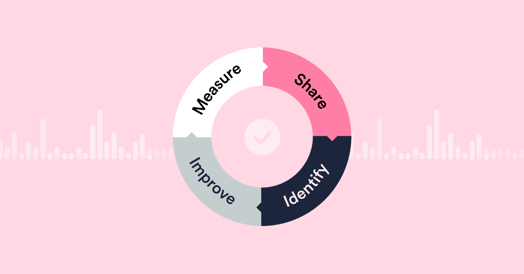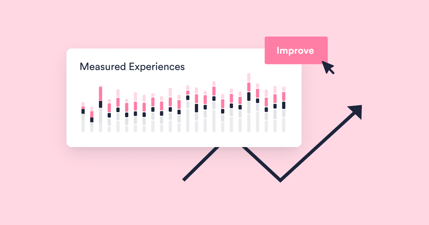IT service management (ITSM) is about improvement. This improvement can cover IT services, operations, experiences, and outcomes which is why AXELOS renamed the ITIL v3/2011 continual service improvement (CSI) process to continual improvement in ITIL 4. But, of course, “continual improvement” is just the term that ITIL uses to describe the mechanics of improving over time, so if you want to think of this as purely “improvement,” feel free to do so.
What do we mean by (continual) improvement?
There are, as with anything, many definitions of improvement, for example, “an occasion when something gets better or when you make it better.” This definition is made more specific within the ITIL 4 purpose statement (for continual improvement):
“… to align the organization’s practices and services with changing business needs through the ongoing improvement of products, services, and practices, or any element involved in the management of products and services.”
Source: AXELOS, Continual Improvement ITIL 4 Practice Guide (2020)
Where to best focus your IT organization’s continual improvement
The short answer must be “where it makes the biggest difference.” But this is still somewhat vague (unless you automatically know the answer). We’ll come back to this, but no organization is likely to have an unlimited budget and time available for continual improvement.
There’s, therefore, a need to prioritize all the available opportunities to improve across services, operations, experiences, and outcomes (based on “where it makes the biggest difference.”) Plus, lest we forget, there’s also a need to be able to measure and report the achieved improvements.
These are both where the IT Experience Management (ITXM™) Framework helps – by allowing organizations to focus on “the right things” and to see the benefits of in-flight and finished improvement initiatives. It does this by using experience data to understand, and drive actions based on, how well IT is helping or hindering end-users in their work (their operations and their outcomes).
The ITXM™ Framework explained
The ITXM™ Framework helps enterprise organizations and managed service providers (MSPs) focus on the right improvement opportunities, whether they’re HappySignals customers or not. Its continuous cycle (shown below) allows organizations to measure end-user experiences and share the results with various business stakeholders (including IT) and third parties.

The continuous cycle starts with measurement using captured real-time experience data (the white Measure arc). The visibility of this experience data is key to the ITXM™ Framework and continual-improvement success, providing actionable insights to various business stakeholders as they eventually repeatedly circle the Framework’s continuous cycle to improve (the pink Share arc).
This data highlights where end-users are most frustrated and losing the most productivity; and aligns with the DevOps amplification of feedback loops (the blue Identify arc). From this data, “corrections” or improvements can be made (the gray Improve arc) based on business value.
Given the continuous cycle of the ITXM™ Framework, as improvements occur, the experience measurement continues (the white arc again). This measurement quantifies the improvement success plus identifies additional issues and opportunities.
How the ITXM™ Framework integrates with continual improvement for better results
If your organization uses ITIL, it’ll likely follow the ITIL v3/2011 or ITIL 4 continual (service) improvement guidance. If not, there’s still likely to be some other agreed corporate process or methodology for systematically moving identified improvement opportunities through to the execution of change.
The ITXM™ Framework doesn’t replace this. Instead, it provides your organization with a proven method for understanding both business needs and the level of improvement achievement.
The Framework starts with creating a baseline for any improvements and providing the data-driven insights for early positive change. To optimize improvement success, the Framework recommends that:
- End-user feedback capture is continuous
- Feedback is captured at the right time
- Experience measurement is in context
- Feedback survey questions need to add value
- Experiences are measured before changes are made, not after them.
The ITSM™ Framework can be overlayed onto the existing corporate improvement process or methodology to create a robust platform for improvement success. The initial measurement shows the experiences end-users have today. Without fully understanding this current state, there’s a danger that your organization will act on people’s gut feelings rather than the insight from an appropriate data set. This approach would still result in improvements, but potentially these are not the right improvements.
When limited to traditional improvement mechanisms, organizations often struggle with the second step in the ITXM™ Framework. This step is the sharing of the insights driving improvements, in this case experience data, with business stakeholders. The issue might be that the experience data tells a different story after years of traditional IT performance measurement. However, it’s the sharing of this data that creates the trust and the common focus needed for improvement.
This need applies to both internal and outsourced IT service providers. For example, an MSP that doesn’t share how its customers’ end-users feel about its services will struggle to get its customers’ trust and the focus on improving what matters most (to end-users) – ultimately making contract renewal more difficult.
Without data-driven insights into the current issues and what matters most, continual improvement investments will likely be driven by gut feelings, personal beliefs, technology sales and marketing, the loudest voices, or similar. It might also be challenging to understand the root causes of these issues. Ultimately, experience data and the ITXM™ Framework elevates your existing continual improvement capabilities. For example, your IT organization might already know about some problems based on gut feelings. Still, with real-time experience data, it can confirm not only their existence but also their relative priority and potentially the root cause(s).
The ITXM™ Framework and continual improvement allow you to improve what matters most
When using the ITXM™ Framework cycle, your organization can better prioritize and address “what matters most.” The delivered improvements increase the end-user experience and employee productivity, plus business operations and outcomes as a result.
However, these aren’t the only improvements. Employee motivation and intra-party trust levels also increase, especially through the sharing and celebration of improvement successes. For example, IT personnel can see their growing positive impact on their business colleagues or end-users. This insight not only aids motivation it also inspires people for the next improvement challenge. At a business-function level, communicating successes to stakeholders is key too. It increases trust in IT – both in capability and performance terms – and encourages even more feedback provision (because it’s visibly and successfully acted on).
If you’d like to learn more about the benefits of integrating the ITXM™ Framework with your organization’s continual improvement capabilities, please download a copy of the ITXM™ Framework guide here.




